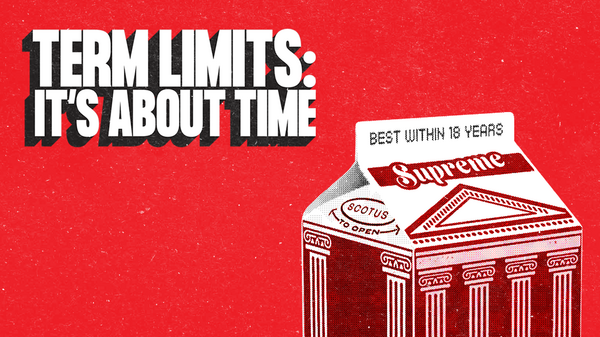We’re in the final weeks of the Supreme Court’s term, waiting for rulings on affirmative action, LGBTQ+ rights, student loan forgiveness, and more. Alexander Hamilton wrote that the courts were the “least dangerous” branch of government. Not anymore. It’s hard to overstate the Supreme Court’s power and impact — or the damage done by its now-ensconced conservative supermajority.
As the Court has grown more powerful, so have individual justices, who now serve more than a decade longer on average than they used to. Some are likely to stay on the bench for as long as 35 years — covering nine presidential terms. All the while, they are shaping policies and laws that can endure for generations.
This is no way to run a democracy. A new Brennan Center report, which I wrote with my colleague Michael Milov-Cordoba, outlines a solution to restore balance and accountability to our nation’s highest court: adopting 18-year terms and regularized appointments for Supreme Court justices.
Here’s how this would work: After an 18-year active phase, justices would shift to a senior phase for the rest of their time on the bench. During the active phase, justices would decide cases on the Court’s docket as they do now. As senior justices, they would hear cases on the lower federal courts, assist with judicial administration, and step in to hear Supreme Court cases when the Court is short-staffed due to a recusal or unexpected vacancy.
A similar senior judge framework has been in place for more than a century in the lower federal courts and was applied to the justices in 1937. Under this reform, Congress would set the schedule for justices assuming senior status rather than letting them choose their own timing. Job security and salaries would remain protected regardless of how the justices rule in particular cases, as required by the Constitution, preserving judicial independence.
We think another element also makes sense: regular appointments. With staggered terms, a new vacancy would open on the Court every two years. That way, each president would nominate two justices per four-year term, putting an end to the inequality and unpredictability of the current system. Trump appointed three justices in his one term, while Obama, George W. Bush, and Clinton each named two over two terms — and Jimmy Carter appointed none. Presidents shouldn’t have such disparate imprints on the Court. Regular appointments would likely mean a Court that is better attuned to, and reflective of, a changing country.
What’s more, Supreme Court term limits are popular! Support for term limits is remarkably high and transcends party lines. More than two-thirds of Americans, including over half of Republicans, favor limiting the justices’ terms.
This could be achieved by constitutional amendment. But that’s not required to adopt this reform. As we explain in the report, term limits can be implemented by statute as long as the justices retain their judicial office after their 18-year term, which is what the senior justice system provides. Congress has broad authority to shape the Supreme Court’s structure and the justices’ duties. And lawmakers have used that power repeatedly over our nation’s history, including to change the size and jurisdiction of the Court, to provide for reduced duties for justices who retire from active service, and to require justices to sit on lower courts.
Term limits and regularized appointments are only part of the solution. Among other things, the Court’s cascading ethics scandals make clear that we need a binding code of conduct and other ethics reforms as well. But these changes to how justices reach the Court and hear cases would be a transformative step to solidify the link between the Court and the will of the people.










